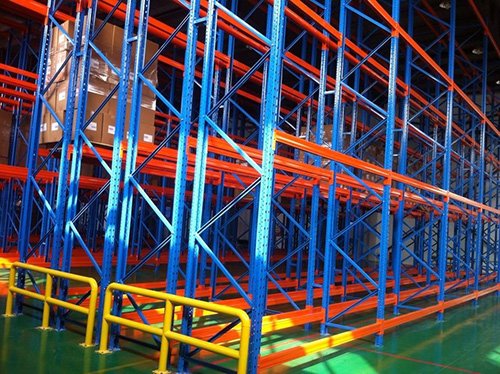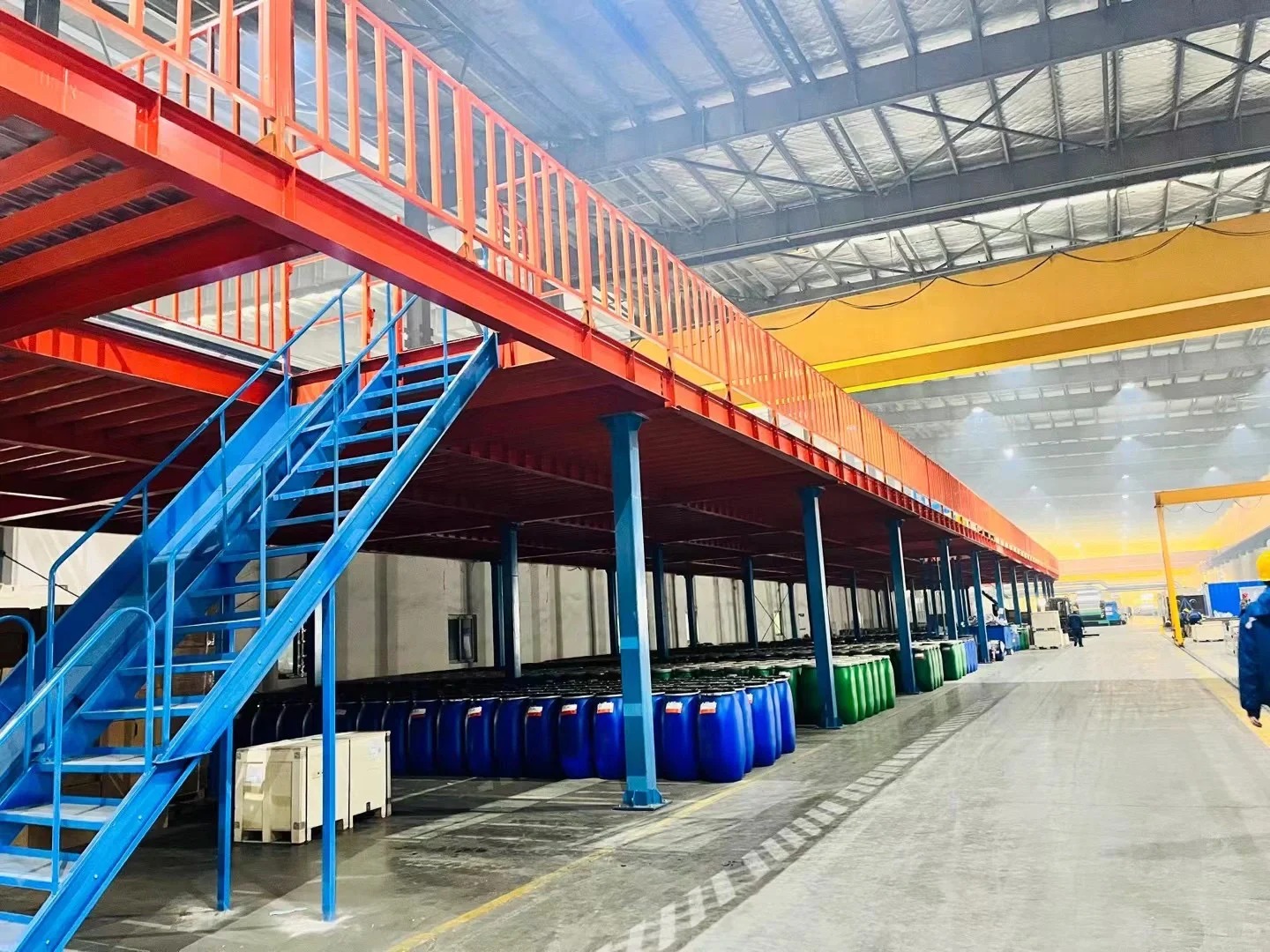Warehouse racking systems are the literal backbone of modern logistics, enabling the vertical storage essential for maximizing space and efficiency. However, these towering structures, often holding immense weight, present significant hazards if not managed with rigorous warehouse racking safety protocols. Negligence can lead to catastrophic collapses, severe injuries, fatalities, product damage, costly downtime, and substantial financial liabilities. Implementing a comprehensive warehouse racking safety program isn't just regulatory compliance; it's a fundamental operational necessity and a core responsibility. This article delves into seven critical pillars essential for ensuring the integrity and safety of your warehouse storage systems.

1. The Foundation: Proper Loading and Weight Distribution
The single most critical factor in warehouse racking safety is adhering strictly to the manufacturer's load specifications. Every beam level and overall bay has a defined Safe Working Load (SWL) or Uniformly Distributed Load (UDL).
Understanding Load Notices: Clearly posted load notices (load signs) must be visible on every racking run. These indicate the maximum permissible load per beam level and per bay. Ignoring these limits is a primary cause of racking failure.
Distributed Loads: Loads must be evenly distributed across the pallet and the beam. Concentrated or point loads (e.g., heavy items resting on only part of the pallet deck or directly on beams) create dangerous stress points.
Pallet Integrity: Damaged pallets (broken boards, missing blocks, warped frames) compromise load stability. They can collapse under weight or fail to distribute the load correctly onto the beams, increasing the risk of a racking incident. Implement strict pallet quality control.
Load Dimensions & Placement: Oversized loads or pallets placed incorrectly (e.g., hanging over beams, not centered) can impact structural integrity and create instability. Ensure loads fit within the rack cell dimensions.
Beam Deflection: Minor deflection under load is normal. However, excessive or permanent deflection indicates overloading or damage and requires immediate investigation and unloading.
2. Vigilance is Key: Regular Inspection and Damage Assessment
Proactive and systematic inspection is the cornerstone of preventative warehouse racking safety. Damage, however minor it may seem, compromises the structural integrity of the entire system.
FERC (Federation of European Racking Associations) Guidelines: Widely adopted globally, FERC recommends three tiers of inspections:
Operational (Daily/Weekly): Conducted by warehouse staff (e.g., forklift operators, supervisors). Focus on obvious damage from impacts, leaning frames, or overloaded bays. Report any damage immediately.
Visual (Monthly/Quarterly): Performed by designated, trained personnel (e.g., safety officer, maintenance lead). A more thorough walk-around checking for specific types and locations of damage (see below).
Expert (Annually/Post-Impact): Conducted by a technically competent person (SEMA Approved Racking Inspector (SARI) in the UK or equivalent qualified racking inspector elsewhere). A comprehensive structural assessment.
Critical Damage Identification: Inspectors must be trained to identify:
Upright Damage: Dents, bends, tears, especially in the "red zone" (critical lower 2 meters). Loose or missing base plates or anchor bolts.
Beam Damage: Bent, twisted, or disconnected beams. Damaged beam end connectors (hooks, locks, bolts). Beam deflection beyond acceptable limits.
Bracing Damage: Bent, broken, or disconnected horizontal or diagonal braces.
Footplate/Anchor Damage: Loose, damaged, or missing anchors. Cracked concrete around footplates.
Load Supports: Damaged or missing decking, wire mesh, or pallet supports.
Damage Reporting & Action: A clear, immediate reporting procedure is vital. Implement a tagging system (e.g., Red/Yellow/Green) to quarantine damaged bays until inspected and repaired by qualified personnel. Never assume damage is superficial.

3. Empowering the Front Line: Comprehensive Employee Training
Human factors play a massive role in warehouse racking safety. Every employee interacting with the racking system needs appropriate training.
Forklift Operator Training (Critical): This goes beyond basic forklift operation. Operators must be specifically trained on:
Safe maneuvering within narrow rack aisles.
Precise load placement and retrieval techniques to avoid impacts.
Understanding load capacities and distribution principles.
Recognizing potential instability in racks and loads.
Procedures for reporting near-misses and damage immediately.
General Warehouse Staff Training: All personnel should understand:
The importance of warehouse racking safety and the consequences of failure.
How to identify obvious damage and the reporting procedure.
Basic load security principles.
Awareness of hazards when working near racking (e.g., during picking).
Management & Supervisor Training: Leaders need training on inspection protocols, incident investigation, enforcing safety procedures, and understanding the technical aspects of racking safety to make informed decisions.
Refresher Training: Regular refreshers are essential to maintain awareness and address complacency. Training should be documented.
4. Creating a Stable Environment: Flooring, Layout, and Clearances
The environment in which the racking stands significantly impacts its safety and stability.
Warehouse Flooring: Must be level, stable, and capable of supporting the concentrated loads transmitted through the rack uprights. Uneven floors cause racks to lean, inducing dangerous stresses. Regular floor inspections for cracks, settlement, or deterioration are crucial.
Rack Anchorage: All racking must be securely anchored to the floor according to the manufacturer's specifications and seismic/regional regulations. Loose or missing anchors are a critical failure point. Anchor integrity should be part of regular inspections.
Aisle Widths: Aisles must be sufficiently wide for the specific forklifts and loads used, allowing safe maneuverability without risking impacts. Consider turning radii and mast heights.
Clearances: Maintain adequate clearance between the top of stored loads and overhead structures (sprinklers, lights, ductwork). Ensure clearance between loads on adjacent beams and between loads and uprights to prevent dislodgement or pressure.
Traffic Management: Implement clear traffic flow patterns (e.g., one-way aisles), designated pedestrian walkways separated from forklift routes, and appropriate signage/speed limits to minimize collision risks. Consider physical barriers where needed.
5. The Backbone of Integrity: Professional Design, Installation, and Modification
Safety begins long before the first pallet is stored.
Professional Design: Racking systems must be designed by qualified structural engineers or specialists, considering:
Actual loads (weight, dimensions, distribution).
Floor conditions and load-bearing capacity.
Forklift types and reach heights.
Seismic/wind loads (as per local codes).
Required safety factors.
Qualified Installation: Installation must be performed by experienced personnel following the manufacturer's precise instructions and engineering drawings. Improper assembly is a major risk.
Permits & Sign-Off: Ensure relevant building or operational permits are obtained. Obtain a formal sign-off from the installer and/or engineer confirming the installation meets specifications before loading.
Strict Modification Control: NEVER modify racking (cutting, welding, drilling, bending) without prior written approval from the original manufacturer or a qualified racking engineer. Unauthorized modifications catastrophically compromise structural integrity and void warranties/insurance. Any approved modifications require updated load notices and potentially re-certification.
6. Proactive Defense: Maintenance, Repair, and Replacement Protocols
Even with excellent practices, damage can occur. A robust system for managing maintenance and repair is non-negotiable for warehouse racking safety.
Qualified Repairs: Repairs must only be carried out by personnel specifically trained and authorized by the racking manufacturer or a qualified specialist company. DIY repairs are extremely dangerous.
Genuine Parts: Only manufacturer-approved or properly engineered equivalent parts should be used for replacements (beams, connectors, braces). Substandard parts fail.
Documentation: Maintain detailed records of all inspections, damage reports, repairs, and replacements. This provides a history and demonstrates due diligence.
Replacement Strategy: Racking has a finite lifespan. Factor in planned replacement based on age, condition, and evolving operational needs. Don't wait for catastrophic failure.
Post-Impact Procedure: Implement a strict protocol for any significant impact:
Immediately evacuate the area around the affected bay(s).
Quarantine the area (use Red tags).
Unload the affected bay(s) carefully and safely, if possible without risk.
Have the damage assessed by a qualified racking inspector.
Follow the inspector's instructions regarding repair or replacement before returning the bay to service.
7. Enhancing Protection: Safety Accessories and Load Security
Supplementing the core structure with appropriate accessories significantly boosts warehouse racking safety.
Column Guards (Upright Protectors): Physical barriers (steel posts, concrete bollards, impact-resistant guards) placed at the base of uprights, especially at aisle ends and corners, to absorb low-level forklift impacts and protect critical structural components.
End-of-Aisle Protection: Heavy-duty barriers designed to withstand higher-level impacts at the ends of racking runs, preventing collapse into cross aisles.
Pallet Supports/Wire Decking: Prevents pallets or individual items from falling through beams. Essential where small items are stored or pallets are unstable. Must be correctly installed and rated for the load.
Row Spacers & Back Guards: Maintain alignment between rows and prevent loads from being pushed through the back of the rack.
Load Security: Ensure loads are stable on pallets (shrink wrap, banding, straps) and pallets are stable on beams. Unsecured loads can shift during placement/retrieval or over time, creating instability hazards.
Achieving true warehouse racking safety is not a one-time project; it's an ongoing cultural commitment. It requires investment in quality equipment, professional expertise, rigorous processes, and continuous employee engagement. By systematically addressing these seven pillars – from meticulous loading and vigilant inspection to comprehensive training, environmental management, controlled design/modifications, proactive maintenance, and strategic safety accessories – organizations create a robust defense against racking failures.
The consequences of neglecting warehouse racking safety are measured not just in damaged goods or repair costs, but in human lives and livelihoods. Prioritizing it protects your most valuable assets: your people, your product, your reputation, and your bottom line. Make warehouse racking safety the unshakeable foundation of your logistics operation.







